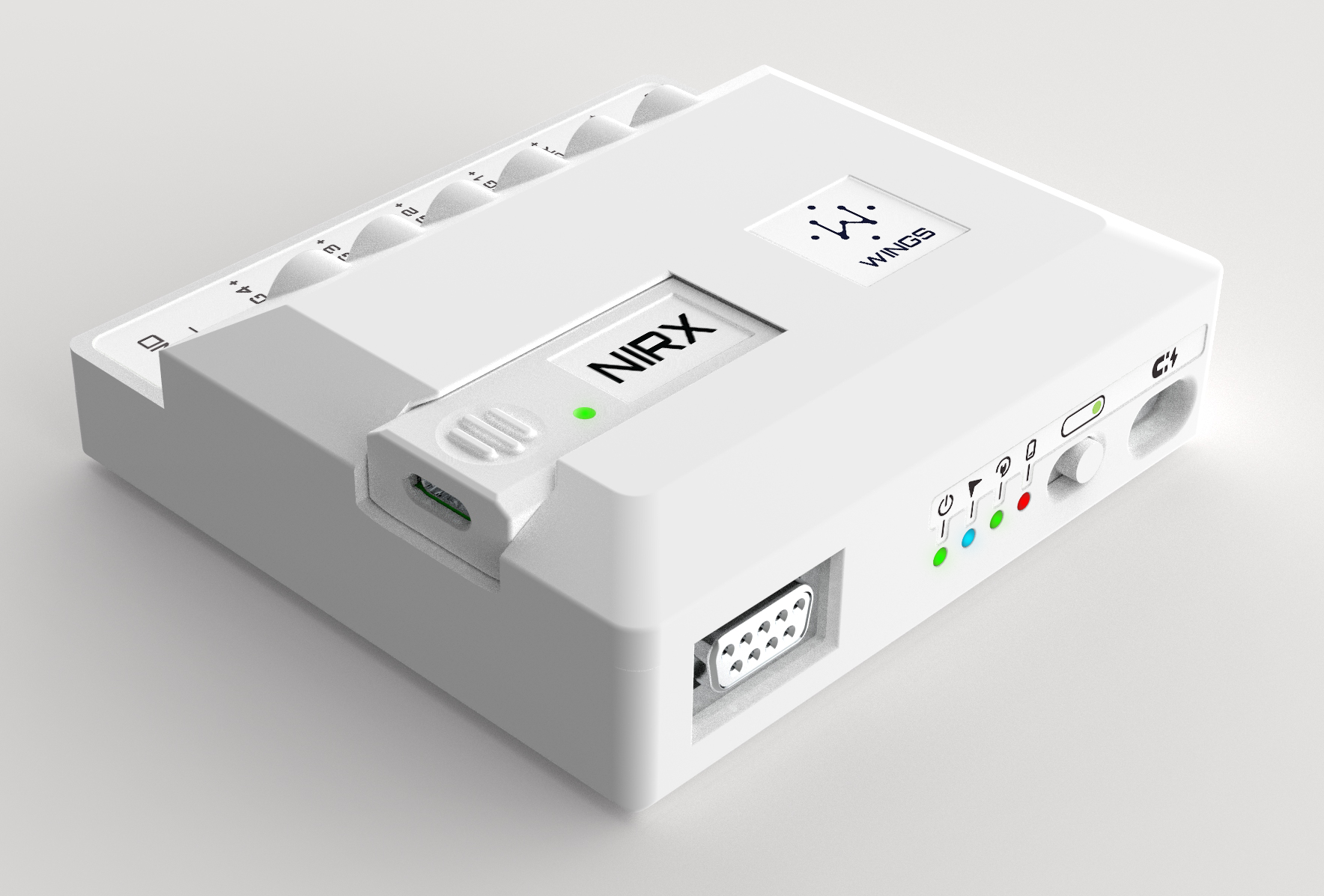The NIRxWINGS1 module for peripheral physiology measurements extends the NIRSport2. It comes with sensors for respiration, ExG, electrodermal activity (EDA -frequently referred to as Galvanic Skin Response), temperature, and PPG pulse oximetry (PPG). All signals are fully synchronized and in one data stream.
Wireless data transfer allows the participant to move freely while real-time data is stored on the device, streamed, and displayed in real time. The NIRSport2 platform and the NIRxWINGS1 provide an LSL stream.
NIRxWINGS Advantages
The assumption is that we only measure evoked hemodynamic signal. In reality, we also measure non-evoked, systemic activity as well. When we perform a measurement, we need not only to measure the metabolic brain activity (i.e. HbO and HbR) due to the task we are interested in, but also to measure several global body parameters (e.g. HR, BR, Tonic/Phasic Skin Conductance, Blood Pressure, SpO2) that can help to explain more variance in the fNIR signal and improve the outcome the research.
With NIRxWINGS, you can move outside the lab into complex, dynamic, and multi-sensory real-world environments to conduct Systemic Physiology-Augmented fNIRS (SPA-fNIRS). The system enables new experimental paradigms and the creation of high-quality research databases. You can read more about the importance of physiological signals in fNIRS in this blog post.
NIRxWINGS1 connects to the NIRSport2 via Bluetooth dongle. NIRSport2 can connect wirelessly to the acquisition computer so you can collect physiological measurements concurrently with fNIRS data on the go.
Key specifications
Data transmission: WiFi and internal storage (via Bluetooth connection to NIRSport2)
A/D Resolution: 24-Bit
Sampling Rate: 500 Hz
Export Data: CSV (text). Exported along with fNIRS data in .SNIRF format.
Sensors: combined PPG/HRV/SpO2, 12-bit solid state temperature, bioimpedance-based respiration, GSR, 4-channel ExG
Power Supply: Battery (5 h runtime)
Physical: 101 mm x 96 mm x 30 mm, 190 g (approx.)
Introducing NIRxWINGS2
NIRx is proud to introduce the next evolution in physiological sensing technology launching this year: NIRxWINGS2. Designed based on valuable customer feedback, NIRxWINGS2 enhances flexibility, signal quality, and overall usability while maintaining the core functionality of its predecessor, NIRxWINGS1.
There have been over 1000 publications with our systems, check out more papers on this page.





